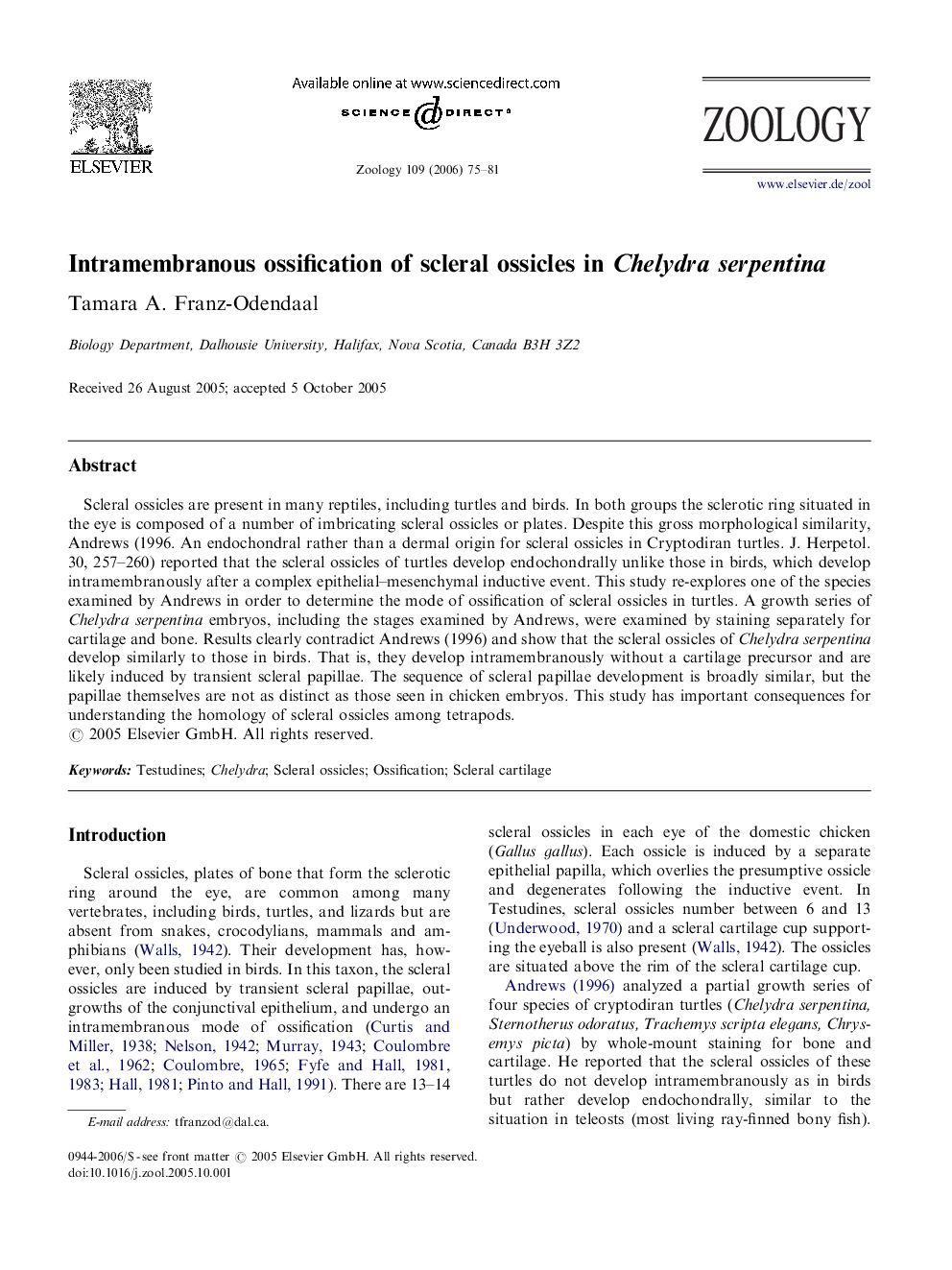| Article ID | Journal | Published Year | Pages | File Type |
|---|---|---|---|---|
| 2791449 | Zoology | 2006 | 7 Pages |
Scleral ossicles are present in many reptiles, including turtles and birds. In both groups the sclerotic ring situated in the eye is composed of a number of imbricating scleral ossicles or plates. Despite this gross morphological similarity, Andrews (1996. An endochondral rather than a dermal origin for scleral ossicles in Cryptodiran turtles. J. Herpetol. 30, 257–260) reported that the scleral ossicles of turtles develop endochondrally unlike those in birds, which develop intramembranously after a complex epithelial–mesenchymal inductive event. This study re-explores one of the species examined by Andrews in order to determine the mode of ossification of scleral ossicles in turtles. A growth series of Chelydra serpentina embryos, including the stages examined by Andrews, were examined by staining separately for cartilage and bone. Results clearly contradict Andrews (1996) and show that the scleral ossicles of Chelydra serpentina develop similarly to those in birds. That is, they develop intramembranously without a cartilage precursor and are likely induced by transient scleral papillae. The sequence of scleral papillae development is broadly similar, but the papillae themselves are not as distinct as those seen in chicken embryos. This study has important consequences for understanding the homology of scleral ossicles among tetrapods.
